
Unlike the name Ghana, Gold Coast was a contraption by European explorers and traders in the late fifteenth and early sixteenth centuries. Portuguese explorers were among the first Europeans to reach this region west of the Gulf of Guinea (Nkrumah 1963, 6), and they named it Costa d’Ouro, which translates to Gold Coast in English, due to the abundance of gold resources they encountered along the coast.
Subsequently, other European powers, including the Dutch, British, and French, also referred to the region as the Gold Coast as they established trading posts, forts, and colonies in the area. The Gold Coast, unlike popular belief, only encompassed the coastal region of what is now Ghana, stretching from the western border with Ivory Coast (Côte d’Ivoire) to the eastern border with Togo.
Would you describe the entire country of Ghana as a coast? Of course not!
While Ghana does have a coastline along the Gulf of Guinea in the Atlantic Ocean, the coastal area is just one part of the country’s geographical makeup. Ghana’s coastline stretches for about 560 kilometres (350 miles) along the southern border of the country, but the interior regions consist of diverse landscapes such as savanna grasslands, tropical forests, and low-lying hills.
So although Ghana does have a significant coastal area, it also includes inland regions that are not part of the coast. The Gold Coast historically referred to the coastal region of Ghana known for its gold resources, but it does not encompass the entirety of the country.
Given this knowledge, one may ask, “Is Ghana’s former name really Gold Coast?”
The Guinean Coast
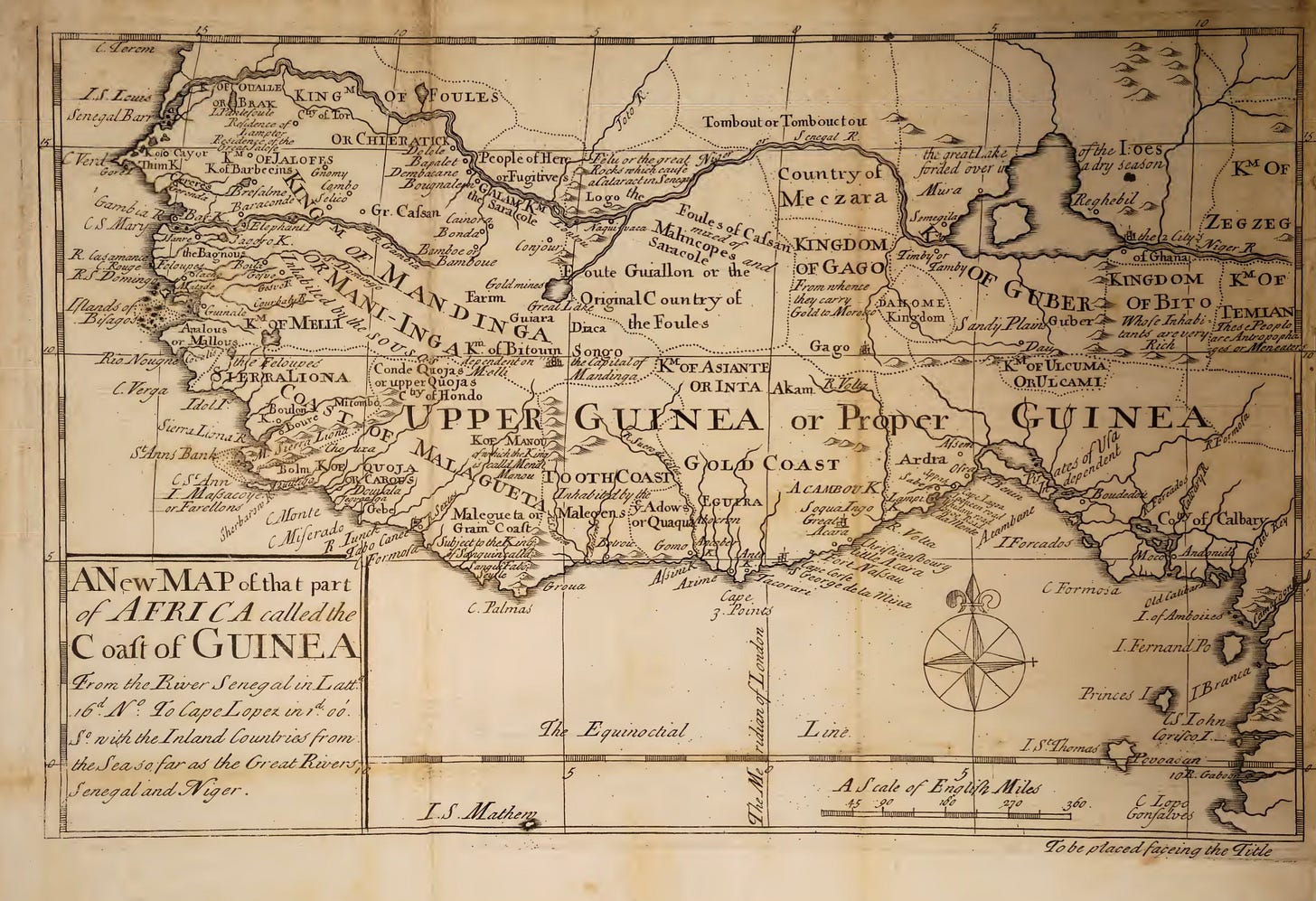
The Gold Coast was not the only region that Europeans named based on the abundance of a significant trade commodity. As shown on this map (Moll 1732), throughout history, European explorers and traders named various regions and settlements after valuable commodities or resources that they encountered during their expeditions. Some examples include:
Ivory Coast/Tooth Coast: European explorers named the region along the West African coast the Ivory Coast due to the abundance of ivory from elephant tusks traded by local populations.
Palm Oil Coast: Referred to the coastal areas in West Africa, particularly in modern-day Nigeria and Liberia, where palm oil production was a major industry. European traders named this region after the valuable palm oil extracted from the fruit of oil palm trees.
Grain Coast: Also known as the Pepper/Malagueta Coast, it was a region along the West African coast, covering parts of modern-day Liberia, where European merchants obtained grains and spices such as pepper for trade.
Slave Coast: This was a region along the West African coast, including parts of modern-day Togo, Benin, and Nigeria, where European traders conducted extensive trade in enslaved Africans.
These places were named primarily during the Age of Exploration, which spanned roughly from the fifteenth to the seventeenth centuries. During this period, European powers such as Portugal, Spain, the Netherlands, England, and France embarked on voyages of exploration to discover new trade routes, expand their empires, and exploit the resources of distant lands (Benezet 1788, 14 – 29).
The specific centuries in which these names were recognised and commonplace varied, but they generally fell within the broader timeframe of the Age of Exploration, which saw significant European maritime activity and the beginning of global trade networks (Snelgrave 1754, 6).
Coastal Dwellers
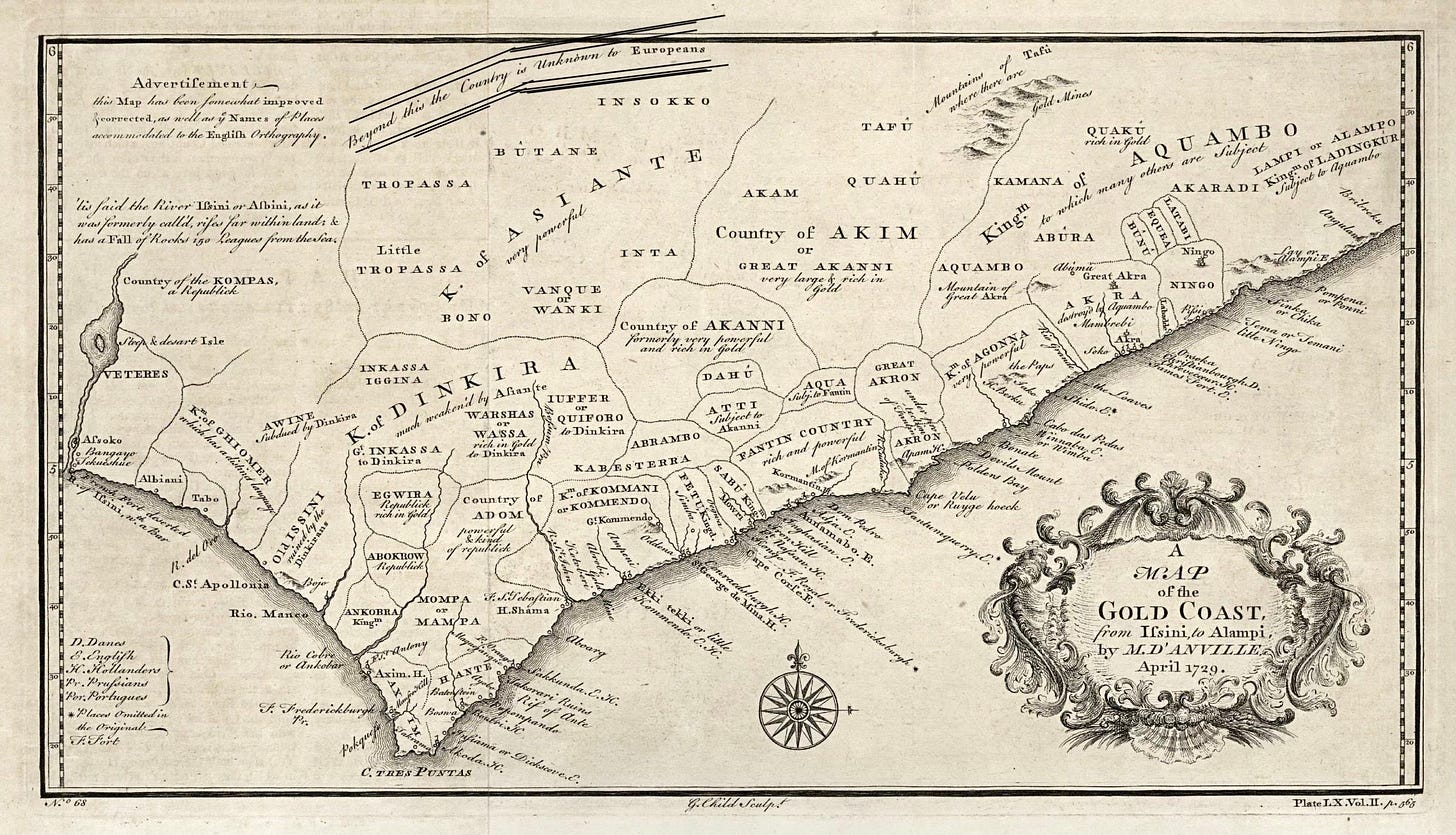
One noticeable thing about these European-inspired names is that they are descriptive only of the coasts. This is because European explorers and merchants never ventured inland, and they had very good reasons, as Joao de Barros, a chronicler who had been stationed at Mina (Elmina), would recount:
It [Guinea] is so peaceful, meek and obedient an estate, that, without our having one hand holding a lighted lunt on the touch-hole of a gun and the other hand holding a lance, it gives us gold, ivory, wax, hides, sugar, pepper, malaguetta[sic]; and it would give us more things if we would only penetrate into the hinterland . . . But it seems that for our sins, or for some inscrutable judgment of God, in all the entrances of this great Ethiopia that we navigate along, He has placed a striking angel with a flaming sword of deadly fevers, who prevents us from penetrating into the interior to the springs of this garden, whence proceed these rivers of gold that flow to the sea in so many part, of our conquest. (Bovill 1978, 118)
During the time period in which the passage was written, the term “Ethiopia” was often used more loosely to describe the vast and largely unknown territories of sub-Saharan Africa. “Lunt” refers to a slow-burning match or cord used to ignite the gunpowder in a firearm.
The speaker is saying that all of the struggle to find valuable commodities wasn’t necessary as they were trading with the locals peacefully. And although they knew they could have more if they travelled inland, for fear of sickness, they stayed only at the coast.
It was only until the late nineteenth century that “many of the gold-producing areas of the Gold Coast and neighbouring countries were first visited by European travellers” (Bovill 1978, 119).
This adds credence to the earlier assertion that the Gold Coast was only descriptive of the coast that would later be named Ghana because even those who coined the name had no thorough intelligence of the situation inland.
This is further confirmed by Konadu (2010, 54), who writes, “The Portuguese, like other Europeans to follow, were invariably limited to the Gold Coast littoral…” They had no in-depth knowledge, for instance, of the area now part of modern Ghana, which the English would refer to as the protectorate of the Northern Territories or of Trans-Volta Togoland, so the name could never be descriptive of the greater region.
The Gold Coast Epoch

One will find from this online dictionary that Ghana is “a republic in West Africa comprising the former colonies of the Gold Coast and Ashanti [Asante], the protectorate of the Northern Territories, and the U.N. trusteeship of British Togoland: member of the Commonwealth of Nations since 1957. 91,843 sq. mi. (237,873 sq. km). : Accra.”
This definition makes it even clearer that the Gold Coast was only one of the four colonies that would later become Ghana. The British, in one of their own annual colonial reports (His Majesty’s Stationery Office 1934, 1), clearly state that “The Gold Coast Colony, with Ashanti, the Northern Territories and Togoland under British Mandate, is situated on the Gulf of Guinea … ” and it’s further stated that, “The estimated population of the Gold Coast and its Dependencies at the end of the year 1932 was 3,271,557…” (His Majesty’s Stationery Office 1934, 8).
The merger of these four colonies would become modern-day Ghana. It is obvious what the British mean by the word “dependencies”. So why would anyone, Ghanaian or homo sapiens, ever say Ghana’s former name is Gold Coast?
If that were the case, then one could say the U.N. trusteeship of British Togoland (Trans-Volta Togoland) would suffice should that question be posed. But why, really, should Ghana have a former name? Could that mean Ghana is absolutely independent and free from any form of colonial influence? If that were the case, which Gold Coast are we talking about? Is it the Portuguese Gold Coast, the Swedish Gold Coast, the Brandenburg/Prussian Gold Coast, the Dutch Gold Coast, the Danish Gold Coast, or the British Gold Coast Colony? On the subject of which Gold Coast:
The Portuguese Gold Coast refers to the coastal areas of present-day Ghana that were explored and controlled by the Portuguese during the Age of Discovery in the fifteenth century. The Portuguese established several trading forts and settlements along the coast, primarily for the purpose of trading in gold and other commodities. Some of the notable Portuguese forts on the Gold Coast included São Jorge da Mina (Elmina Castle) and Fort São Sebastião (Fort San Sebastian). The Portuguese Gold Coast was established from 1482 to 1642, marking a century and six decades of Portuguese occupation on the Gold Coast.
The Swedish Gold Coast also known as the Swedish Africa Company, established a colony on the Gold Coast in the late seventeenth century, centred around the Cape Coast Castle. The Swedish colony was established primarily for the purposes of trade, including trade in gold, ivory, and other commodities. In 1650, the Swedish Africa Company built Fort Christiansborg. However, due to financial constraints, they stayed briefly on the Gold Coast from 1650 to 1663.
The Brandenburg/Prussian Gold Coast refers to a short-lived colonial venture by the Brandenburg African Company from 1682 to 1721. The Brandenburger Gold Coast was established primarily for the purposes of trade, including trade in gold, ivory, and slaves. However, the venture faced significant challenges, including conflicts with indigenous peoples and competition from other European powers.
The Dutch Gold Coast, also known as the Dutch West India Company, or WIC, was a colony in present-day Ghana established by the Dutch in the seventeenth century. The Dutch established trading posts and forts along the coast, including Fort Amsterdam (Fort Cormantin) and Fort Elmina (Elmina Castle), after seizing them from the Portuguese in 1637. The Dutch Gold Coast existed for two hundred and sixty years.
The Danish Gold Coast, also known as the Danish West Indies, was a colony in present-day Ghana established by the Danish in the seventeenth century. It consisted of several trading posts and forts along the coast, including Fort Christiansborg (Osu Castle), purchased from the Swedish, and Fort Frederiksborg (Fort Royal). The Danish primarily engaged in trade, including the transatlantic slave trade, the gold trade, and other commodities such as ivory and spices. In 1850, Denmark sold its forts and possessions on the Gold Coast to the British, who incorporated them into their own colony, ending a one hundred and ninety-year Danish stay on the Gold Coast.
The British Gold Coast was a British colony in present-day Ghana established by the British in the nineteenth century. The British established numerous forts and trading posts along the coast, including Cape Coast Castle and Fort James. The British Gold Coast colony was established in 1821 and lasted until 1957, marking one hundred and thirty-six years of British colonialism.
After independence in 1957, the nation, which was a merger of four colonies, would be known as the Dominion of Ghana until 1960, when it became the Republic of Ghana. If former names are so important to any interested party, perhaps Ghana’s is the Dominion of Ghana.
Mr Frank Abeku Adams, a historian, activist, and social and political commentator, explains the mistake of, according to Ghana, a former name so perfectly in this Facebook post.
Few Examples of Works That Propagate This Assertion
The reasons for the erroneous stance that Ghana’s former name is Gold Coast can be attributed to bad-tempered history teachers and the fact that most Ghanaians are either uninterested in a detailed history of the country or do not have access to literature on Ghana’s history.
The most unfortunate reason is that an innumerable number of credible sources affirm this erroneous narrative. A case in point is this statement by Gocking (2005, 1): “At midnight on March 6, 1957, the former British colony of the Gold Coast became the modern nation of Ghana.” Even before Gocking’s assertion, Claridge (1915, 3) claims that:
The country now known as the Gold Coast includes, not only the Colony proper, but also Ashanti and a small portion of the Southern Soudan[sic] known as the Northern Territories. Its coast-line extends from Newtown on the west to Aflao on the east, and, in addition to the Gold Coast as geographically defined, includes a part of the Slave Coast to the east of the River Volta. It is only within comparatively recent times that the greater part of this area has been included within the sphere of influence or been visited and explored by Europeans, who, for many centuries, never penetrated more than a few miles into the interior.
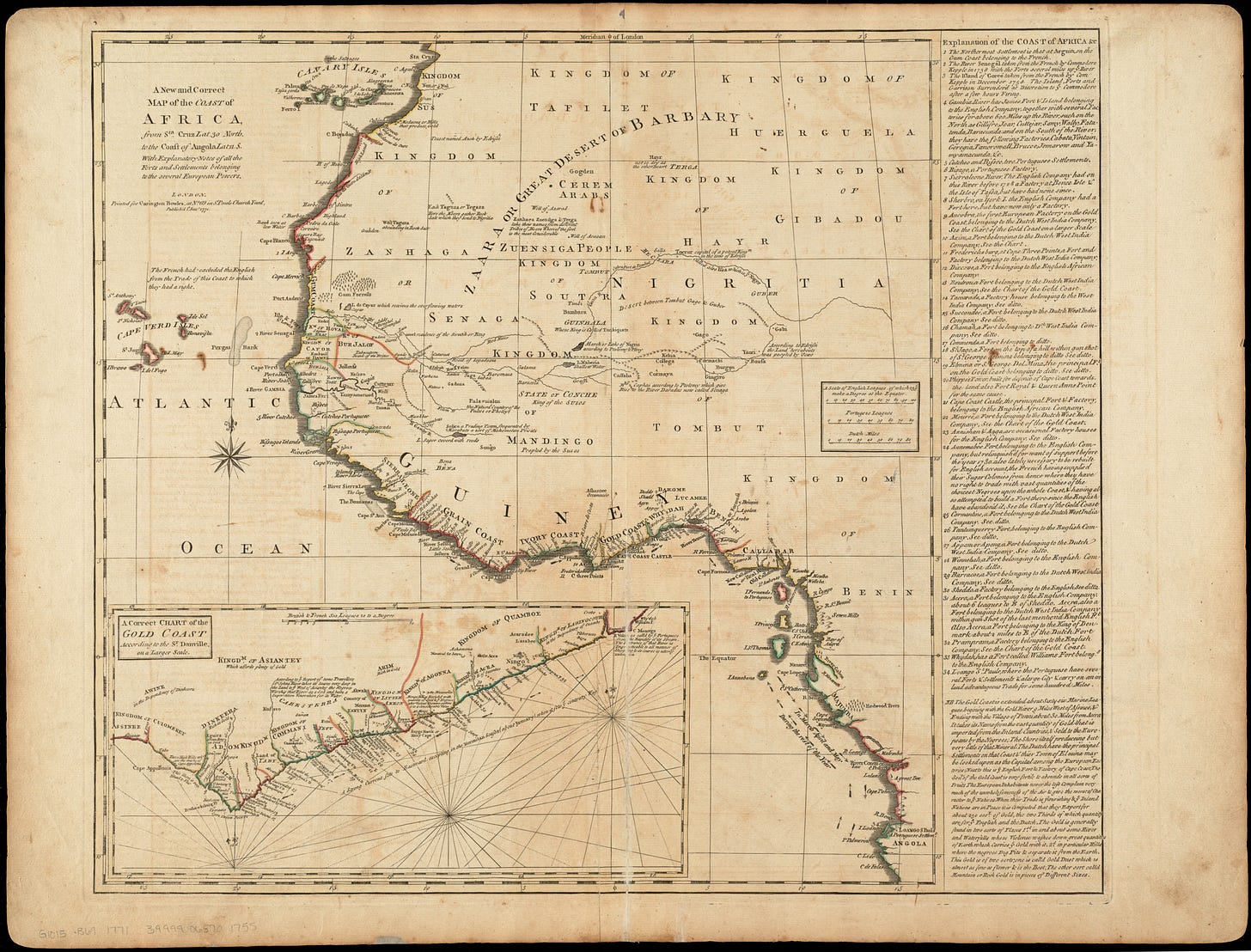
Although he is very accurate about his description, an apparent error is that the Gold Coast was not a country but a colony. A colony typically refers to a territory or region that is controlled and governed by another, often more powerful, country or empire.
Colonies are usually established through colonisation, where settlers from the colonising country migrate to and establish control over the territory. Colonies often have limited or no autonomy and are subject to the laws, regulations, and governance structures of the colonising power.
A country, on the other hand, is a sovereign political entity with defined geographical boundaries, its own government, and the ability to conduct its internal and external affairs independently. Countries have their own laws, constitutions, currencies, and international recognition. Furthermore, Claridge’s take begs the question of whether the Gold Coast was indeed the merger of the Gold Coast Colony, the Asante Kingdom, and the Northern Protectorate.
Although that is false, the British did control other territories in the broader region. So both the Northern Protectorate and the Asante Kingdom, while separate and distinct from the Gold Coast, would later become incorporated into the British-administered colony of the Gold Coast.
However, British Togoland was not part of the Gold Coast colony in the same way as the dependencies aforementioned. Despite being under British rule after World War I, it had separate administrative structures.
It was only in 1957 that British Togoland became part of the newly independent nation of Ghana after a plebiscite held in 1956 determined its people preferred the Gold Coast to the French-administered territory of Upper Volta (now Burkina Faso) (Berry 1995, 17).
For that matter, even if Gold Coast was a total of the colony proper and its two dependencies, it still cannot be the former name of Ghana because it didn’t have the British Togoland.
That is why this definition expresses some truth as Ghana being “a republic in W. Africa, on the Gulf of Guinea … a major source of gold and slaves for Europeans after 1471; British colony of the Gold Coast established in 1874; united with British Togoland in 1957 and became a republic and a member of the Commonwealth in 1960.”
Final Thoughts
If there was an ounce of belief that indeed Gold Coast is the former name of Ghana, then it’s hoped that the proof presented here is able to acquaint readers with the actual facts.
It would be understandable and accurate to argue that the Gold Coast after 1902 was descriptive of more than just the coastal regions, as it’s explained in the book Ghana: A Country Study that,
The Gold Coast Colony, established on July 24, 1874, comprised the coastal areas and extended in land as far as the ill-defined borders of Asante. With the north under British control, the three territories of the Gold Coast – the Colony (the coastal regions), Asante, and the Northern Territories – became, for all practical purposes, a single political unit, or crown colony, known as “the dependency” or simply as the Gold Coast. (Berry 1995, 16 – 17)
However, Ghana is a merger of more than three territories, as this article has explained. It is necessary for Ghanaians and other Africans to make personalised efforts to find out the truths of their history. Little knowledge about one’s country’s history has several consequences.
For instance, one may lose his or her cultural heritage, may be vulnerable to manipulation, may have no cultural identity, may see foreign cultures as superior to theirs, and, of course, may be subjected to inaccurate narratives such as this very falsehood that this article sought to address.
On a broader spectrum of things, a lack of historical knowledge can hinder a society’s ability to understand itself, its place in the world, and its potential for progress and development.
Therefore, efforts to promote education and awareness of history are essential for building informed and resilient communities. What are your thoughts on this? Do you have a differing or similar opinion? Please share them in the comments below.
References
Benezet, Anthony. 1788. Some Historical Account of Guinea, : Its Situation, Produce, and the General Disposition of its Inhabitants, with an Inquiry into the Rise and Progress of the Slave trade, its Nature and Lamentable Effects. London: J. Phillips.
Berry, LaVerle, ed. 1995. Ghana: A Country Study. 3rd ed. Washington, D.C.: Federal Research Division, Library of Congress.
Bovill, E. W. 1978. The Golden Trade Of The Moors. Norwick: Fletcher & Son Ltd.
Claridge W. Walton. 1915. A History of The Gold Coast and Ashanti, vol. 1. London: Frank Cass & Co. Ltd.
Colonial Reports – Annual. 1934. Annual Reports on the Social and Economic Progress of the People of the Gold Coast, 1932–33. London: His Majesty’s Stationery Office. https://libsysdigi.library.illinois.edu/ilharvest/africana/books2011-05/5530214/5530214_1932_1933/5530214_1932_1933_opt.pdf
Gocking, S. Roger. 2005. The History of Ghana. London: Greenwood Press.
Konadu, Kwasi. 2010. The Akan Diaspora in the Americas. New York: Oxford University Press, Inc.
Moll, Herman. 1732. Negroland and Guinea : with the European settlements explaining what belongs to England, Holland, Denmark &c. London: Bowles and John Bowles. https://collections.leventhalmap.org/search/commonwealth:kk91fq372
Nkrumah, Kwame. 1963. Africa Must Unite. New York: Frederick A. Praeger.
Snelgrave, William. 1754. A New Account of Guinea, and the Slave-Trade containing I. The History of the late Conquest of the Kingdom of Whidaw by the King of Dahomey…II. The Manner how the Negroes become Slaves…III. The Relation of the Author’s being taken by Pirates, and many dangers he underwent.London: J. Wren.
Hello, Substack doesn’t support Stripe in my country. I use Stripe Express, but Stripe Proper isn't available in my country, so there’s no way I can earn any money here. However, if you liked this and like to support my work (and volunteerism), click here to Buy Me a Coffee. Thanks for your support.


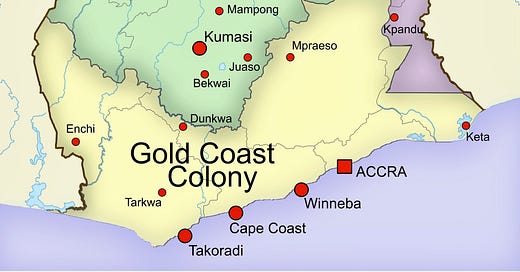


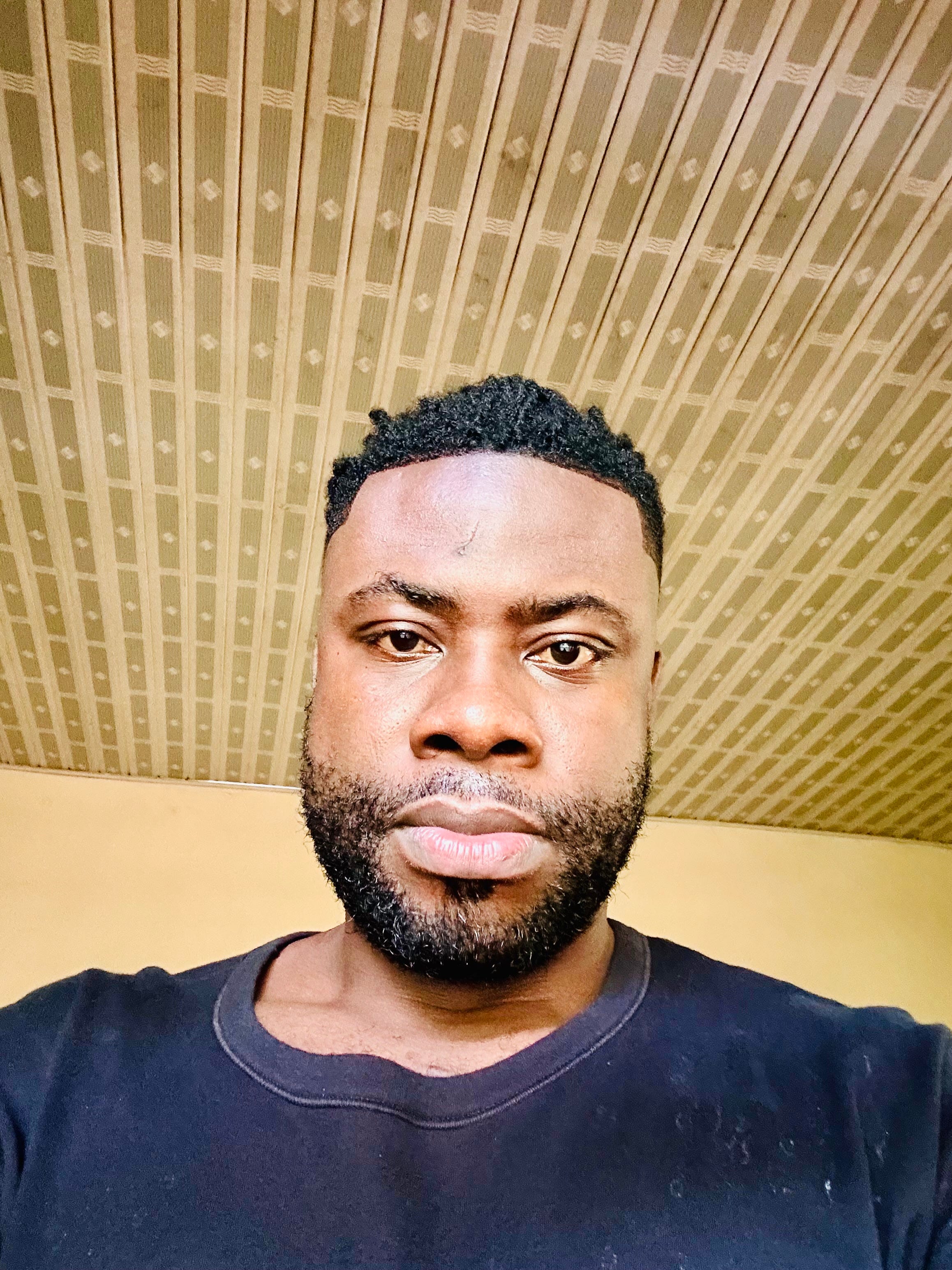
I thought you were talking about our popular Gold Cost in Australia. 😊Thanks for educating us with your stunning geography story.